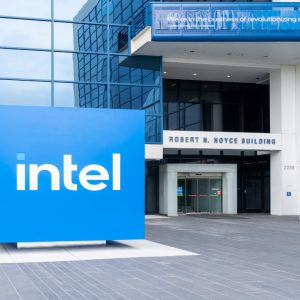
Shares in Nvidia have fallen by 6% in after-hours trading, despite second-quarter results from the GPU firm that reported $16.6bn in GAAP net income – a year-on-year increase of 168%. Analysts attributed the market disappointment to a failure on the company’s part to exceed analyst estimates in all respects, in addition to production delays for its Blackwell AI chip.
Unsurprisingly – and perhaps justifiably – Nvidia’s chief executive Jensen Huang struck an upbeat tone in his reaction to his firm’s Q2 results. “The anticipation for Blackwell is incredible,” said Huang, with samples being delivered to customers. Additionally, said the CEO, “Nvidia achieved record revenues as global data centres are in full throttle to modernize the entire computing stack with accelerated computing and generative AI.”
Nvidia’s stellar data centre profits
Nvidia’s total revenue for Q2 FY25 reached $30bn, a 122% rise from $13.5bn in Q2 FY24. As Huang noted, this sharp rise in Nvidia’s net income and revenue is primarily driven by a surge in demand for its data centre products and accelerated computing solutions. The former segment achieved record revenue of $26.3bn in Q2 FY25, representing a 154% increase from $10.35bn in the same quarter the previous year. This segment alone contributed approximately 88% of Nvidia’s total revenue, underscoring its critical role in the company’s financial performance.
Additionally, the launch of the H200 Tensor Core and Blackwell architecture, along with the Spectrum-X Ethernet networking platform, has further propelled revenue growth by meeting the rising needs of cloud service providers, consumer internet companies, and enterprises.
The strong performance in the data centre business has significantly bolstered Nvidia’s profitability, with operating income climbing to $18.64bn in Q2 FY25, up 174% from $6.8bn in the same period last year.
All segments performing well
Nvidia’s gaming segment, meanwhile, reported revenues of $2.9bn for Q2 FY25, a 16% year-over-year increase. These were driven by higher sales of GeForce RTX 40 Series GPUs and robust seasonal demand. Automotive revenue, on the other hand, reached $346m, up 37% from the previous year, reflecting the growing adoption of Nvidia’s AI cockpit solutions and autonomous driving platforms. The Professional Visualisation segment also saw a 20% increase year-over-year, supported by sustained demand for RTX GPU workstations.
Looking ahead, Nvidia expects revenue for the third quarter of fiscal 2025 to be $32.5bn, with a variance of plus or minus 2%. The company forecasts GAAP and non-GAAP gross margins of 74.4% and 75%, respectively, with a possible fluctuation of 50 basis points. Gross margins for the full year are projected to remain in the mid-70% range.
Earlier this month, Nvidia Research unveiled a new generative AI model, StormCast, designed to replicate high-fidelity atmospheric dynamics, marking a significant step in its efforts to apply AI in climate science. Additionally, Nvidia introduced a new suite of services to support humanoid robot manufacturers, including the NIM microservices platform for robot simulation and learning, and the OSMO orchestration service aimed at managing multi-stage robotics workloads.






